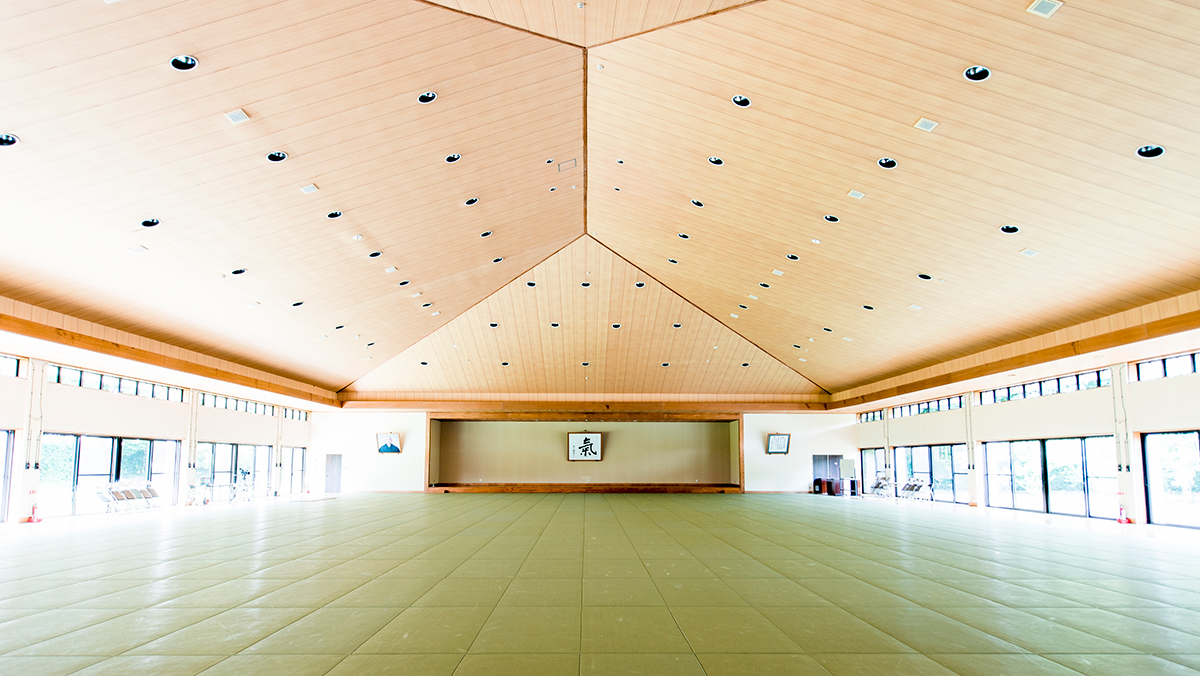In Shin-Shin-Toitsu Aikido practice, students learn to respect their opponents’ mind and guide and throw them according to “The Five Principles for Shin-Shin-Toitsu Aikido”.
The Five Principles for Shin-Shin-Toitsu Aikido
1. Extending Ki
2. Know your opponent’s mind
3. Respect your opponent’s Ki
4. Put yourself in the place of your opponent
5. Perform with confidence
For example, let’s say someone is very strong and throws the opponent with force. If the person being thrown resists in his or her mind and this leaves a negative feeling, then it is not truly “leading”.
If we compare this to everyday life, let’s say a person in authority gives someone an order. If the person receiving this order is resisting in his or her mind even though they are obeying the order, then it’s not truly “leading”.
You have to perceive the opponent’s situation and understand where he or she is trying to go before you can move them and lead them to the destination. The same is true for techniques. This is what it means to lead and throw your opponent.
To begin with, there is no “win” or “lose” in the practice of Shin-Shin-Toitsu Aikido. The person who throws is not a “winner” and the person who is thrown to is not a “loser”.
In this same way, there are no “winners” or “losers” in this same situation in everyday life. The one who leads is not a “winner” and the one who is led is not a “loser”.
In Shin-Shin-Toitsu Aikido, the word “ukemi” refers to “defending oneself.” Ukemi does not mean simply being thrown and rolling.
Many people take the word “ukemi” to mean being passive because of the idea of being led. But ukemi is, by nature, extremely active.
Just like in our daily lives, the relationship doesn’t end when we are thrown. In fact, it continues afterwards.
If you lose your posture and are hurt as a result of being thrown, you won’t be able to get up right away and prepare for the next movement. In fact, if you hit your head it can even be life-threatening.
Therefore, proper ukemi is essential.
Basically, the ukemi in Shin-Shin-Toitsu Aikido does not tap or slap the tatami. We always take ukemi in such a way so that the body lands smoothly.
In extreme cases, even on a hard surface such as asphalt, the ukemi must minimize damage in order to allow the body to prepare for the next attack in an instant.
In other words, the purpose of ukemi is not only to protect yourself while being thrown, but also to prepare for your next movement.
Years ago, I taught a professional boxer. This boxer, who was a great athlete, was deeply interested in ukemi.
According to this boxer, it was not only the damage done by his opponent, but also the damage done by hitting the floor when he was knocked down. He said that this double damage made it easy for him to lose his composure.
He said he wanted to learn ukemi well, so that he could do it unconsciously. Afterwards, this great athlete practiced well and got the hang of it.
In fact, this is the same thing in our daily lives.
Failures and troubles can arise and knock us down. But life doesn’t end there. It’s at such times that ukemi is necessary, because recovery is always essential. Being able to actively use our minds to prepare for the next event in life, immediately, is a great strength of the mind.
However, if our composure is disrupted, we cannot do that. This is something that can only be learned by practicing with your body, not by mental theory.
For those of you who practice Shin-Shin-Toitsu Aikido, I would like you to brush up not only on your throwing, but also on your ukemi with the correct purpose.
(translate: Moe Mimori)
(edit: C. Curtis)

